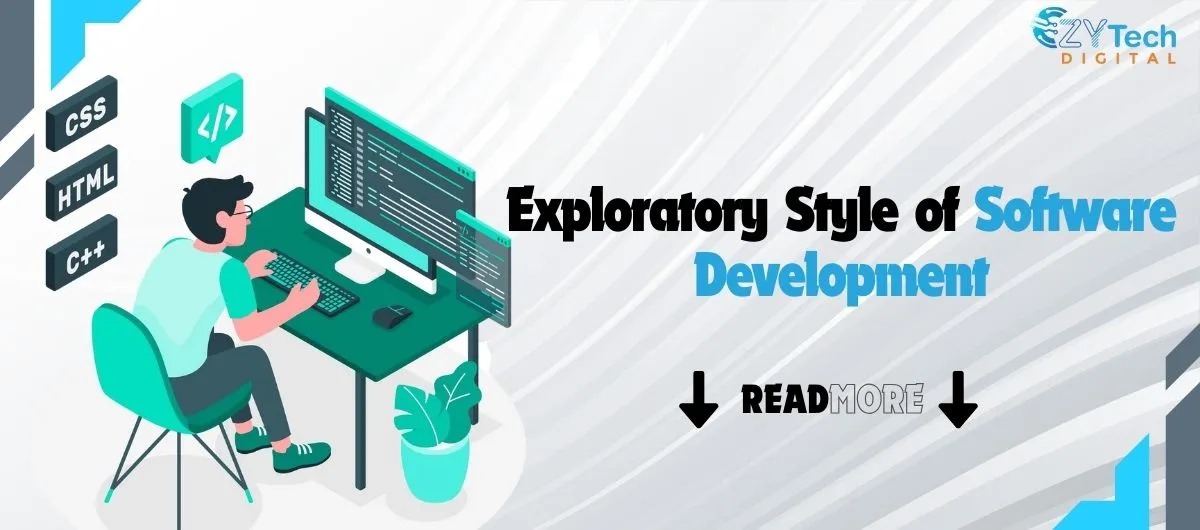
- November 16, 2024
- admin
- 0
Exploratory Style of Software Development
The Exploratory Style of Software Development combines flexibility, experimentation, and continuous learning. Traditional software methodologies have struck out due to their fixation on the software requirements. The exploratory approach focuses more on discovery and real-time problem-solving. This leads to innovation and software solutions that better meet user needs. With this style, Developers can iteratively reshape the requirements, code, and design to better suit their evolving needs. Users are also able to gain real-time improvements to their products. This technique has proven beneficial in complicated or ever-changing environments where certain requirements are not enough to complete a project.What is the Exploratory Style of Software Development?
The Exploratory Style of Software Development focuses on the user’s needs at a specific point when designing solutions. Rather than being rigid and multi-layered like traditional software methodologies, this one is more open. It uses checking and balancing as its primary development technique. This style is especially beneficial in times wherein requirements of the project are vague or constantly changing, which is usually the case with complex projects.Key Characteristics of Exploratory Style of Software Development
The Exploratory Style of Software Development stands out due to its flexibility, creativity, and responsiveness to change. Some key characteristics include:- Adaptive Learning: Developers continuously test new ideas and improve based on real-time feedback.
- Minimal Upfront Planning: Rather than following a strict roadmap, development evolves based on discoveries made during the process.
- Rapid Prototyping: Teams build quick prototypes to test functionalities before committing to final implementations.
- User-Centric Approach: The process incorporates user feedback frequently to refine and enhance the software.
- Iterative Cycles: Continuous iterations lead to improved versions of the software.
- Collaboration and Creativity: Encourages teamwork and innovation to solve problems efficiently.
Benefits of Exploratory Style of Software Development
The Exploratory Style of Software Development offers several advantages, making it a preferred choice for many modern development teams:1. Flexibility and Adaptability
This approach allows developers to pivot quickly in response to new findings, changes in requirements, or user feedback, ensuring that the final product remains relevant and effective.2. Faster Time-to-Market
By focusing on rapid prototyping and iterative development, software can be released more quickly compared to traditional development methods.3. Encourages Innovation
The Exploratory Style of Software Development fosters creativity, allowing developers to experiment with new ideas without fear of failure.4. Improved Software Quality
Since testing and feedback are integrated throughout the process, the end product is more refined and user-friendly.5. Enhanced User Satisfaction
User feedback plays a crucial role in shaping the development, leading to software that better meets user needs and expectations.When to Use the Exploratory Style of Software Development
The Exploratory Style of Software Development is particularly beneficial in the following scenarios:- Projects with Unclear Requirements: When the scope is not well-defined and needs frequent adjustments.
- Startups and New Product Development: When innovation and adaptability are essential for success.
- Prototyping and Proof-of-Concept Development: When testing ideas before committing to a full-scale implementation.
- Complex and Evolving Systems: When requirements change dynamically based on market trends or user demands.
Challenges in Exploratory Style of Software Development
While the Exploratory Style of Software Development provides many benefits, it also comes with certain challenges:1. Lack of Predictability
Since this approach does not follow a predefined plan, it may be difficult to estimate timelines and resources accurately.2. Requires Skilled Developers
This style demands a high level of expertise and problem-solving skills from developers, as they must continuously adapt and make decisions on the go.3. Documentation Issues
Due to the rapid and iterative nature of the process, maintaining proper documentation can be challenging.4. Risk of Scope Creep
Without a structured approach, there is a possibility of uncontrolled expansion in the project scope, leading to delays and increased costs.Best Practices for Implementing Exploratory Style of Software Development
To maximize the effectiveness of the Exploratory Style of Software Development, consider the following best practices:- Define Broad Objectives: Even though detailed planning is minimal, having a general direction helps guide development.
- Emphasize Communication: Encourage constant collaboration among team members to align expectations and goals.
- Implement Frequent Testing: Continuous testing ensures that issues are identified and resolved early in the development cycle.
- Use Agile Methodologies: Combine the exploratory approach with agile frameworks like Scrum or Kanban for better workflow management.
- Gather Continuous Feedback: Regular feedback from users and stakeholders ensures that the software remains relevant.
Tools That Support Exploratory Style of Software Development
Several tools can help facilitate the Exploratory Style of Software Development:- Version Control Systems: Git, GitHub, GitLab
- Prototyping Tools: Figma, Sketch, Balsamiq
- Agile Project Management Tools: Jira, Trello, Asana
- Automated Testing Tools: Selenium, Jest, JUnit
- Continuous Integration/Continuous Deployment (CI/CD): Jenkins, CircleCI, Travis CI
